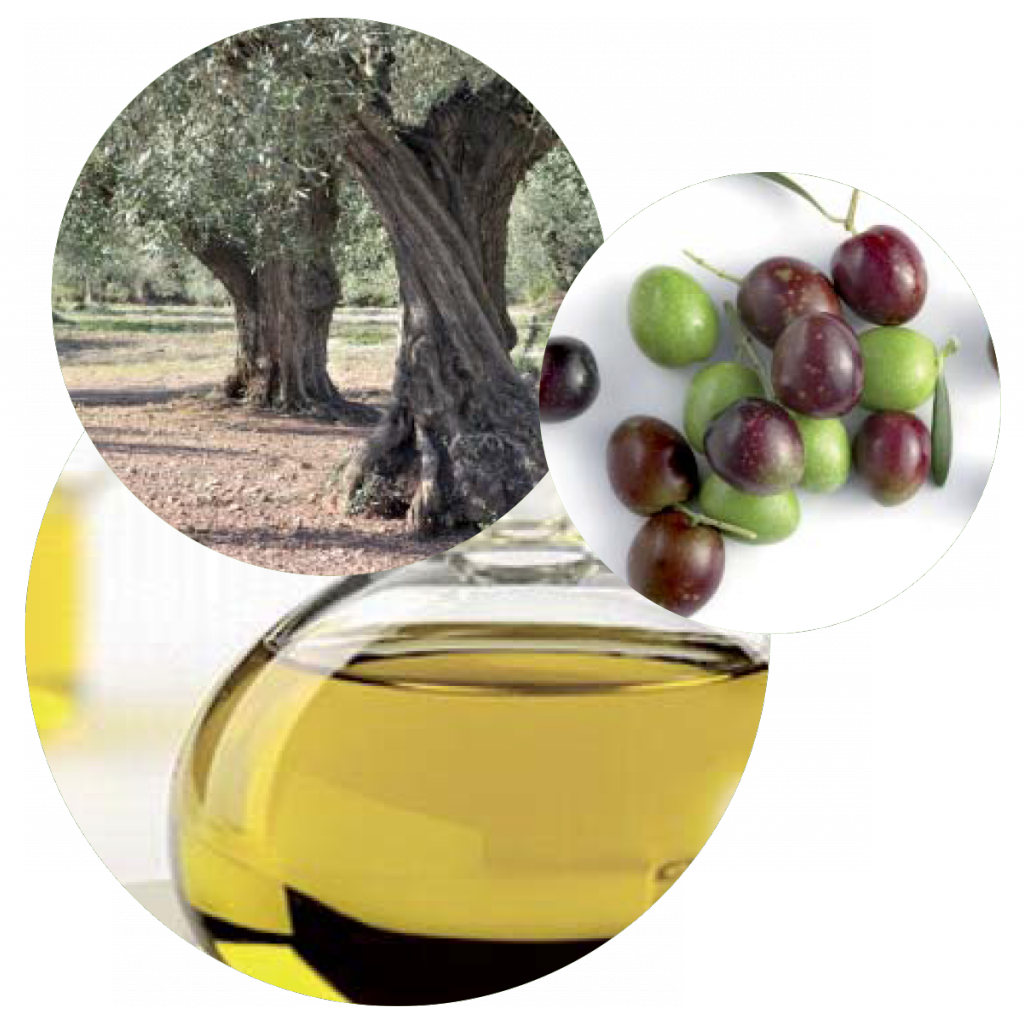The origin of olive cultivation is lost in time, overlapping and blending with civilizations that developed around the mediterranean Sea.
Olive leaf fossils have been found in Pliocene deposits at Mongardino in Italy. Fossilized remains have been discovered in strata from the Upper Paleolithic at the Relilai snail hatchery in North Africa, and pieces of wild olive trees and stones have been uncovered in excavations of the Chalcolithic period and the Bronze Age in Spain. From this it can be concluded that the existence of the olive dates back to 5 000 B.C. The origin of the cultivated olive is thought to in Asia Minor (Turkey), around 6 000 years ago.
The cultivated olive tree, Olea europea L, is derived from the wild variety, Olea chrysophylla Lam.
The farming of the olive tree has been linked to mediterranean culture for thousands of years. Civilizations that have lived around the mediterranean sea have left much evidence that they were well versed in their farming and techniques for processing the fruits.
An outstanding example is the myth that tells how Athena was chosen as the guardian of the city of Attica after she offered the gift of an olive tree, a tree with fruit that would provide the inhabitants with food, which would heal their wounds, give them light and create perfume.
The importance of olive oil in the mediterranean diet is undeniable. There is evidence of an early oil trade among civilizations such as Mesopotamia, Mycenae and Egypt. Maybe the most important evidence of this trade is found at Testaccio in Rome, a hill littered with the remains of amphorae used to transport the oil from Baetica (Andalusia) to Rome. The high number of these containers from that area found in Rome and many Roman settlements clearly shows the importance of olive culture on the Andalusian economy and on the Iberian Peninsula in general.

Nowadays the importance of the olive oil sector in Spain, and in particular in Andalusia, is well-known. Spanish olive oil accounts for approximately 50% of world production, with Andalusia being responsible for 80% of total Spanish production.
Spain is the world’s primary producer of olives and olive oil.
The variety of uses of the olive tree has been crucial in the development of mediterranean civilization. Besides the nutritional properties of the fruit itself, pickled or as oil, it is also worth mentioning the use of the wood as fuel and the medicinal uses of the oil, the fruit and the leaf included in the European pharmacopoeia.
Compounds obtained from the olive tree
Focusing on the medicinal uses of the olive tree, olive oil is used as a base for ointments due to the high stability given by the phenols it contains. The main uses of the leaf are in lowering blood pressure, as an anti-inflammatory and for reducing fever.
On studying the molecules responsible for these properties we find two main functional groups:

“Hydroxytyrosol is one of the main phenols responsible for the high stability of Olive Oil”
Phenols. Oleuropein, the principal phenolic compound, a precursor of hydroxytyrosol, one of the phenols responsible for the high stability of olive oil.
Terpene. Mainly maslinic acid and oleanolic acid.
Phenols present in the olive are partially soluble in both the oily fraction and in the aqueous fraction. This means that some of the phenols will be diluted in the oil whilst other will combine with the water from the olive.
These phenols are used by the olive tree as a natural defense against oxidation agents and are responsible for the high level of protection against cardiovascular and cell damage in humans.
